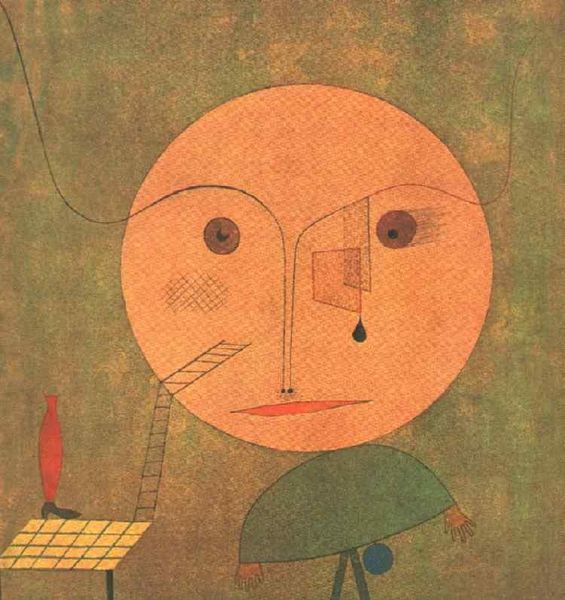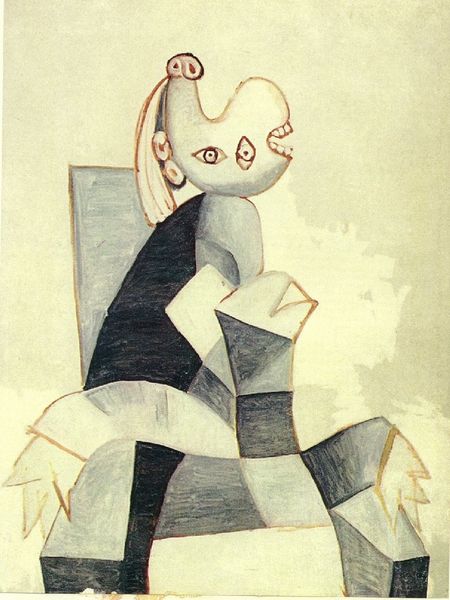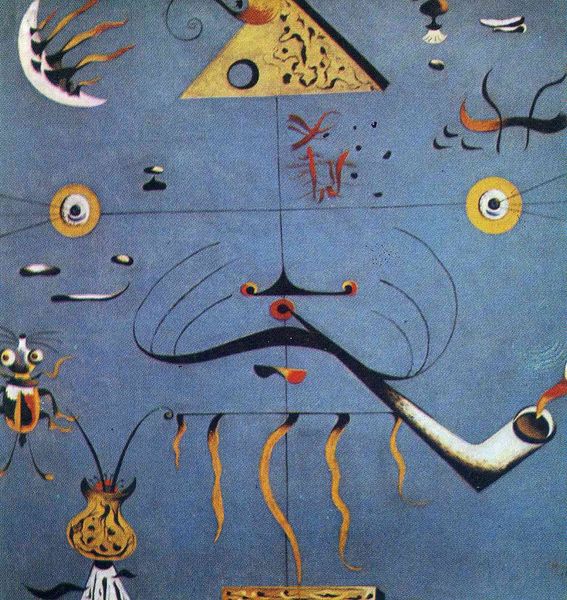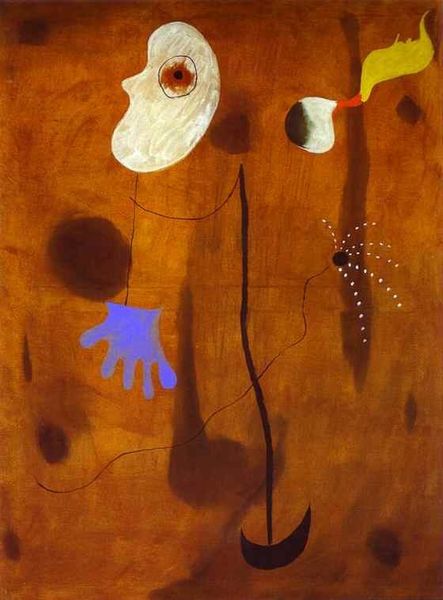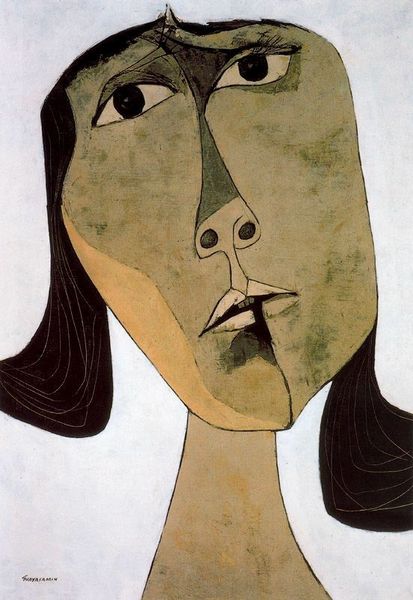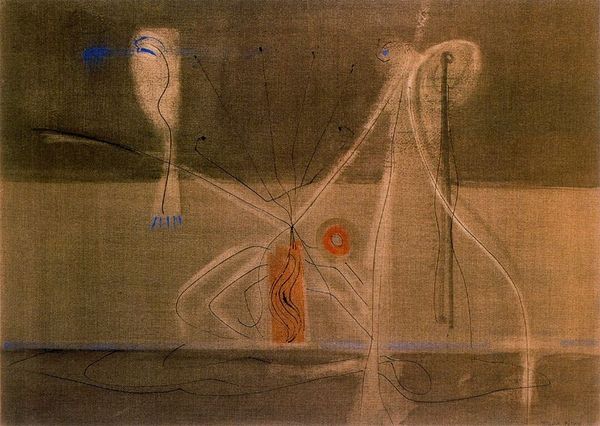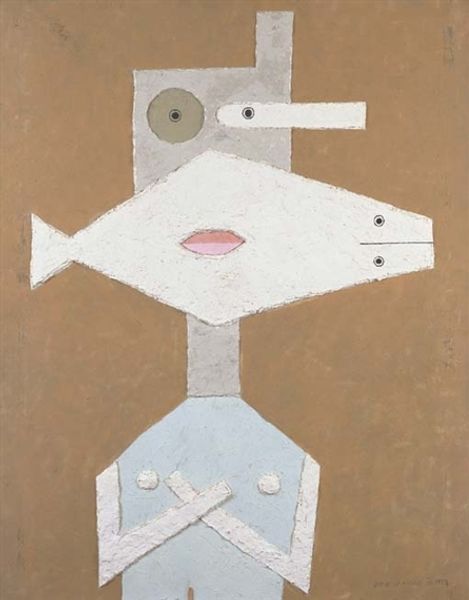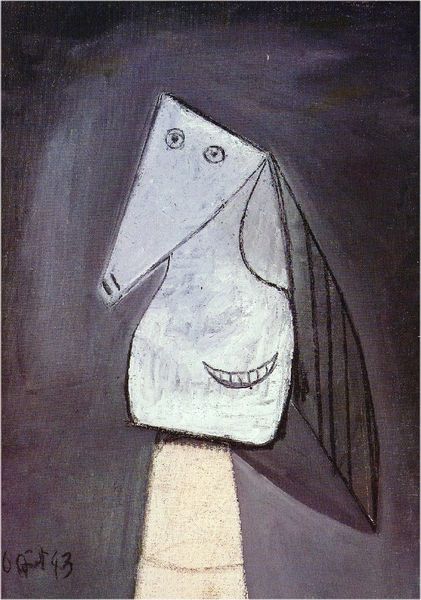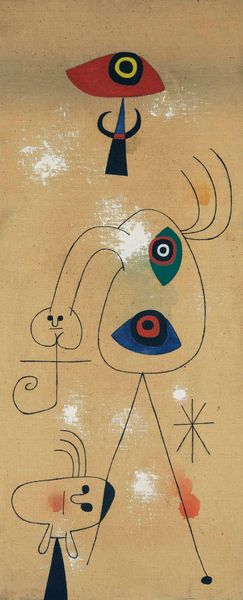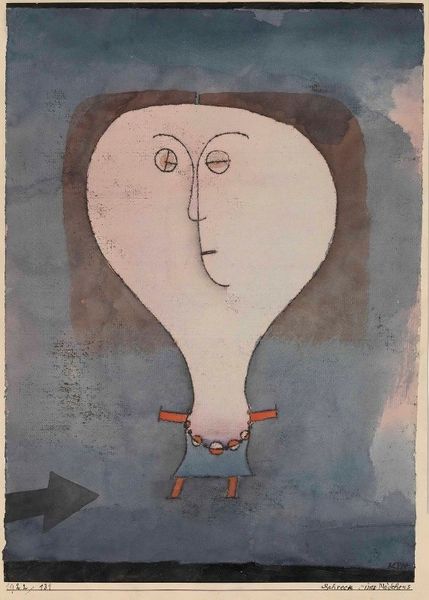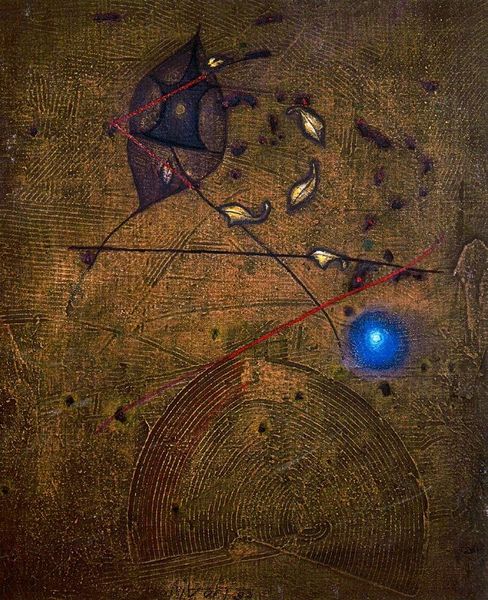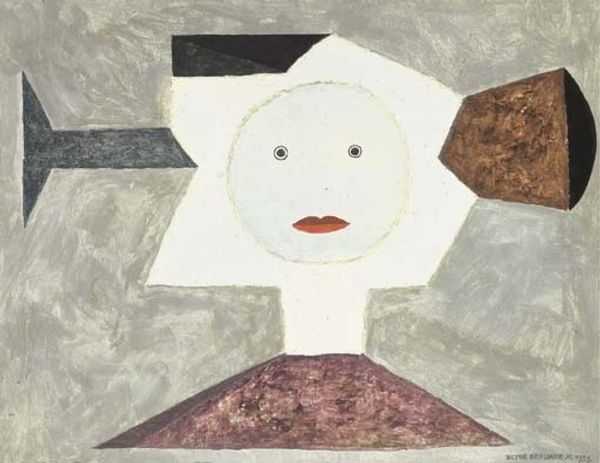
Painting (Man with a Pipe) 1925
0:00
0:00
joanmiro
Museo Nacional Centro de Arte Reina Sofía (MNCARS), Madrid, Spain
painting, watercolor
#
portrait
#
water colours
#
painting
#
watercolor
#
abstraction
#
surrealism
#
mixed media
#
modernism
#
watercolor
Dimensions: 146 x 114 cm
Copyright: Joan Miro,Fair Use
Editor: Here we have Joan Miró's "Painting (Man with a Pipe)," created in 1925. The muted watercolors create this really strange, dreamlike portrait. What can you tell us about this particular work? Curator: This piece offers a compelling window into the early surrealist movement and Miró's evolving critique of societal norms. The "Man with a Pipe," rendered as a biomorphic form rather than a representational portrait, subverts traditional power dynamics inherent in portraiture. The pipe itself—a common symbol of masculinity and bourgeois leisure—is abstracted, almost mocking these established identities. How does that critique of identity resonate with you? Editor: That’s interesting. I never thought of it as a critique, but I see your point about the pipe now. How does the social context of the time influence his surrealist language? Curator: Post-World War I Europe saw widespread questioning of established systems, a sentiment that deeply influenced surrealism. Miró, like many artists, sought to dismantle conventional modes of representation as a form of social commentary. He challenged the viewers to reconsider what is deemed "normal" or "acceptable." The seemingly simple composition hides a subversive dialogue, suggesting the complexities of the human condition that extend beyond conventional portraiture. Doesn’t that contrast make you question what we consider conventional now? Editor: Absolutely. I will never see it in the same way now. It seems like such a powerful statement wrapped in this gentle image. Curator: Exactly. It reminds us that art serves as an essential vehicle for challenging assumptions and sparking crucial dialogues about identity and society.
Comments
No comments
Be the first to comment and join the conversation on the ultimate creative platform.
